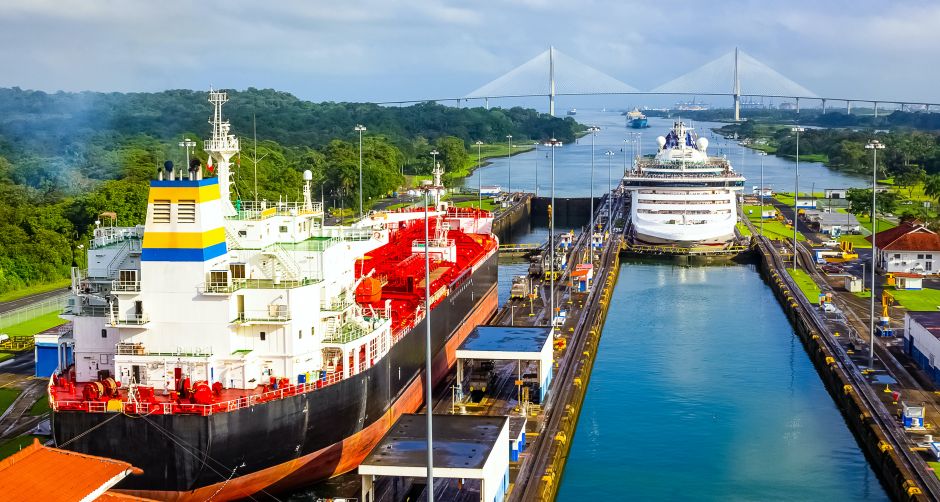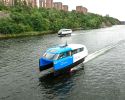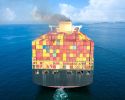Shipping's carbon dioxide emissions can be reduced at chokeponts

Reduced ship speeds are some of the lowest hanging fruit that can help us on the path to fossil-free shipping. But studies have shown that it is not that simple as it often leads to unwanted financial and logistical consequences for shipping companies and cargo owners. However, a new study breathes life into the idea of targeted speed reductions.
In theory it sounds simple; turn off the speed and less energy is used, which in turn reduces emissions. And if this is combined with Just in time (JIT) arrivals, congestion and waiting times in ports are reduced.
"Just in time-arrival combined with reduced speed, slow steaming, is the most appropriate first measure to reduce fuel consumption and emissions in port areas, said Fredrik Rauer at the Port of Gothenburg last year when the Lighthouse study BRAVE ECO - Benchmark for Reduction of Anchoring Vessels' Emissions - Enabling Change of Operation was published.
At the same time, he explained that it is not so easy to introduce JIT in shipping.
“Shipping is one of the oldest ways of transporting goods and there are deep traditions for how it should be conducted. Every transport also involves a lot of money and many parties are involved. There are many different types of contracts relating to ship transport. The question is who will initiate a change. As a port, for example, we regulate the queue order into the port, but we cannot control that the ships reduce their speed” says Fredrik Rauer in the article.
Conventionally, the concept of speed reduction for operational efficiency has only been analyzed in the context of ports, being the end points of ships’ voyages. But is it possible to do it elsewhere on the itinerary? Roar Adland and Gabriel Fuentes, both professors of shipping economics at the Norwegian School of Economics, believe so, and show that waiting time occurs, for example, at bunkering stoppages and at maritime bottlenecks such as canals and straits.
In a new study published in the journal Transportation Research Part D, they argue that shipping emissions reductions are best achieved at intermediate points (channels), as they are not subject to the same contractual barriers as ports. As an example, they use the Panama Canal, which 13,000 ships pass through each year and which has enormous potential for emissions reduction.
The Panama Canal has a very flexible scheduling system, with several options for pre-booking a passage through the canal. According to the authors, this flexibility could be used to allocate slots based on ships' greenhouse gas emissions. In this way, targeted speed reductions could be implemented, which reduced emissions by 1.8 million tons of CO2 equivalents per year during the study's investigation period, 2019 to 2021. During this period, the Panama Canal's total operations emitted approximately 101.9 million tons of CO2 -equivalents, of which 97 percent consisted of carbon dioxide and the rest of methane and nitrous oxide.
However, according to Adland and Fuentes, it would be difficult to introduce mandatory speed reductions for all vessels. They should instead be focused on ships traveling on specific routes that have the greatest impact on emissions, for example the container routes from Asia to the US East Coast. In this way, the Panama Canal could become part of something similar to a green corridor.
-
 NextWave – en podd som ska locka unga
NextWave – en podd som ska locka unga -
 Ny studie: Eldrivna pendelbåtar kan effektivisera Stockholms kollektivtrafik
Ny studie: Eldrivna pendelbåtar kan effektivisera Stockholms kollektivtrafik -
 Sjöfartens utsläpp ökar
Sjöfartens utsläpp ökar -
 Sociala relationer påverkar val av bränsle
Sociala relationer påverkar val av bränsle -
 Sjöfartens omställning kräver ”mjukare” påtryckningar
Sjöfartens omställning kräver ”mjukare” påtryckningar -
 Hon hade avtalad tid med Kapten ynkrygg
Hon hade avtalad tid med Kapten ynkrygg -
 Lighthouse omvärldsanalys 2025 – osäkerhet och tullar präglar sjöfarten
Lighthouse omvärldsanalys 2025 – osäkerhet och tullar präglar sjöfarten -
 Se seminariet Shipping in the Marine Environment
Se seminariet Shipping in the Marine Environment -
 Vad betyder egentligen de 90 procenten?
Vad betyder egentligen de 90 procenten? -
 Hålla där...
Hålla där...

